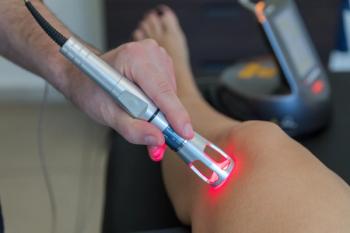
- Dermatology Times, November 2018 (Vol. 39, No. 11)
- Volume 39
- Issue 11
Life-threatening emergency cases in dermatology
Life-threatening emergency cases may be rare, but they can be complex. At EADV this week, experts review cases physicians should be aware of.
Emergencies in dermatology are rare, but when they occur, dermatologists or other health care professionals need to act fast. Dr. Ramos-e-Silva, professor and chair of the University Hospital and Federal University School of Medicine, Rio de Janeiro, Brazil, discussed this at the European Academy of Dermatology and Venereology Congress in Paris on Friday.
Indeed, “most of the patients who go to the E.R with skin diseases don’t need to go to the E.R., and only a limited number of diseases are responsible for most of the true dermatological emergencies.” This is an international problem; “what we see is almost the same all over the world.”
Common skin disorders should be managed on an outpatient basis and general practitioners should be able to treat them. According to Dr. Ramos-e-Silva, the role of dermatologists should be more valued for their ability to provide a differential diagnosis and to distinguish a true emergency from a commonly presenting problem. She thinks that this should be better taught starting in medical school and residency programs.
True dermatological emergencies are caused by allergic reactions or infections (bacterial or viral). Rapid management may be required in the case of severe drug reactions, infections, allergic reactions and flares of inflammatory dermatoses. She reviewed some of the most severe cutaneous adverse reactions: erythema multiforme, Stevens-Johnson syndrome, toxic epidermal necrolysis, Dress syndrome, and Staphylococcal Scalded Skin Syndrome. "The first three are clinically similar and they were thought to be part of a spectrum, but nowadays there is evidence of distinct clinical criteria in the type of skin lesions, topography, mucosal and systemic symptoms,” she said.
ERYTHEMA MULTIFORME
This is an acute (onset usually 24 hours), self-limited, but potentially recurrent skin disease primarily affecting the limbs and face in young adults. Target lesions are symmetrical, fixed, erythematous and papular, with central clearing. Erythema multiforme minor (unlike major) does not usually have mucosal involvement, painful erosions, or systemic symptoms. The precipitating factor is usually infection, particularly by the herpes simplex virus (HSV) or Mycoplasma pneumoniae, Ramos-e-Silva notes. She advises to treat the cause (e.g., antivirals prophylactically for HSV).
STEVENS-JOHNSON SYNDROME AND TOXIC EPIDERMA NECROLYSIS
Stevens-Johnson syndrome and toxic epidermal necrolysis are acute, potentially fatal adverse cutaneous drug reactions (primarily medication-related), with mortality rates of 5% and 25-50%, respectively. They are rare and mainly affect women. Risk factors include certain genotypes and immunosuppression. Keratinocyte death via apoptosis leads to a scalded skin appearance and mucosal detachment; other signs and symptoms include high fever, stinging eyes, skin pain, irregular erythematous, dusky red, or purpuric macules. Ramos-e-Silva states that the extent of surface area involved is important to distinguish these two problems (less involved for Stevens-Johnson syndrome). Treatment includes discontinuing any and all possible drugs.
DRESS SYNDROME
Dress syndrome is an unusual, potentially life-threatening (2-10% mortality), multiorgan adverse reaction that develops 2-6 weeks after drug initiation. Fever and a morbilliform eruption occur in 85%, involving the face, upper trunk and extremities. Treatment includes systemic corticosteroids and IV immunoglobulin.
STAPHYLOCOCCAL SCALDED SKIN SYNDROME
This is a hematogenous dissemination of the exfoliative toxins produced by S. aureus, mainly in infants and young children, involving malaise, fever, irritability, skin tenderness, erythema progressing to bullae within 48 hours, and fissures. The treatment is antibiotics with supportive care. Of note, almost any bacterial infection can progress to an emergency situation.
These emergency conditions are best diagnosed by dermatologists, Dr. Ramos-e-Silva emphasizes, and emergency departments should involve these specialists when needed. On the other hand, primary care practitioners should be ready to care for common dermatological conditions which should be treated as outpatient, and not in the E.R.
REFERENCE
Marcia Ramos-e-Silva, M.D., Ph.D. “Emergencies in dermatology” (abstract # D2T01.1G), EADV 2018 Meeting, Paris, France, September 14, 10-10:20a.m.
Articles in this issue
about 7 years ago
Low-dose bleomycin injections result in curious side effectabout 7 years ago
7 Safety recommendations for tattoo removalabout 7 years ago
Being older helps skin heal with less scarringabout 7 years ago
A guide to wound careabout 7 years ago
Topical sirolimus shows positive results in two studiesabout 7 years ago
Wound healing in psoriasis, multiple sclerosisabout 7 years ago
Classifying diabetic foot ulcersabout 7 years ago
Role of protease targets in wound healing uncertainabout 7 years ago
Allograft Tissue Research Grant program taking applicantsabout 7 years ago
Verrica develops a solution for common wartsNewsletter
Like what you’re reading? Subscribe to Dermatology Times for weekly updates on therapies, innovations, and real-world practice tips.
















